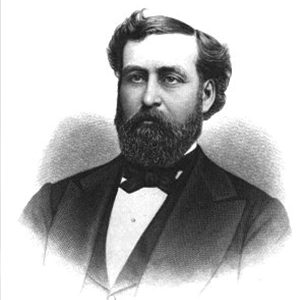 Philip Paul Bliss (July 9, 1838 – December 29, 1876)
Philip Paul Bliss (July 9, 1838 – December 29, 1876)
It was fifty years after the death of Charles Wesley, generally recognized as the greatest writer of hymns the world had seen, that Philip Paul Bliss was born in very humble surroundings in Clearfield County, Pennsylvania. This young boy, who spent his first six years in a log cabin family home, would grow up to challenge that title and would become, undoubtedly, America’s greatest 19th Century composer of Christian songs.
Music played an important role in the Bliss family home. Nevertheless, after leaving home aged eleven and working in the timber trade in rural Pennsylvania, he trained within the teaching profession and held his first appointment in Hartsville, New York. It was not until 1857 that he received his first formal vocal training and his career very quickly turned to music. 1858 saw both his first musical appointment (at the Rome Academy, Pennsylvania) and his marriage to Lucy J. Young. From 1860 he began to travel widely as a teacher of music, and the couple eventually settled in Chicago in 1864. He became increasingly well-known as a solo singer which, alongside a position at Root and Cady Music Publishers, would financially support the couple and allow his compositional career to thrive.
Musical Style and Influences
Contents
Although his childhood surroundings were indeed modest, his faith was unquestionable from a very early age. His father Isaac conducted daily prayers for the family and also nurtured his son with a love of music, teaching him basic singing and an understanding of melody. The deep, inherent link between music and faith would serve as his primary influence for the rest of his life. He would become known for a musical style which was warm and lyrical. Bold harmonies support melodies which intuitively communicate the Christian texts. Bliss was truly a pioneer of American gospel music.
His tragic death in 1876 would shock the musical and Christian worlds. On 29th December Mr and Mrs Bliss were travelling aboard the Pacific Express in inclement weather. Shortly before arriving in Ashtabula, Ohio, the train began to cross a bridge spanning a ravine. Flood waters had weakened the bridge and, upon its collapse, most of the carriages tumbled into the abyss. Fire quickly broke out and the bodies of the couple and many fellow passengers were never recovered. Lovers of his music were left to question how much more he may have achieved had his life not been cut so devastatingly short.
What was Philip Paul Bliss Known For?
The Music of Philip Paul Bliss
The legacy of Philip Paul Bliss is a catalogue of hundreds of songs which continue to comfort and inspire. Many of these are regular features in Christian worship around the world, including “It is well with my soul”, “More holiness give me” and “Man of sorrows (what a Savior)”.
Many of his songs were inspired by stories and events: “Let the lower lights be burning” was composed after he learned of a shipwreck in Cleveland Harbor, whilst “Hold the fort” has its origins in an 1864 Civil War battle. “Pull for the shore” was even reported to have been sung by survivors of the RMS Titanic as they rowed their lifeboats into the night.
Since Bliss’ death in the 1870s, much of his work has been adapted for other instruments like brass bands and guitarists. Several nationally recognized guitar instructors have transcribed his great works for multiple part guitar arrangements.
Philip Paul Bliss Most Famous Works
His songs are generally presented in a series of collections:
- “The Charm” (1871)
- “The Song Tree” (1872)
- “The Sunshine for Sunday Schools” (1873)
- “The Joy” (1873)
- “Gospel Songs” (1874)
